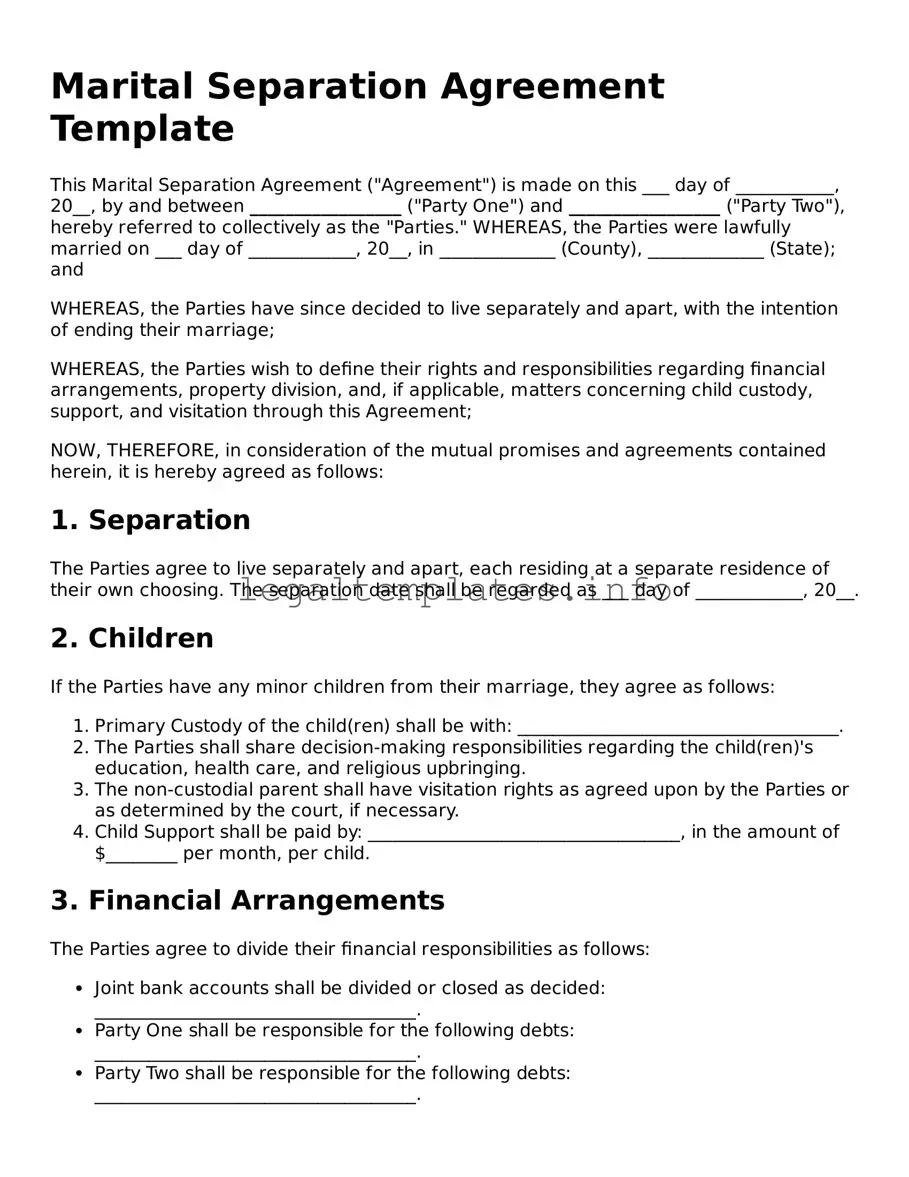Marital Separation Agreement Template
This Marital Separation Agreement ("Agreement") is made on this ___ day of ___________, 20__, by and between _________________ ("Party One") and _________________ ("Party Two"), hereby referred to collectively as the "Parties." WHEREAS, the Parties were lawfully married on ___ day of ____________, 20__, in _____________ (County), _____________ (State); and
WHEREAS, the Parties have since decided to live separately and apart, with the intention of ending their marriage;
WHEREAS, the Parties wish to define their rights and responsibilities regarding financial arrangements, property division, and, if applicable, matters concerning child custody, support, and visitation through this Agreement;
NOW, THEREFORE, in consideration of the mutual promises and agreements contained herein, it is hereby agreed as follows:
1. Separation
The Parties agree to live separately and apart, each residing at a separate residence of their own choosing. The separation date shall be regarded as ___ day of ____________, 20__.
2. Children
If the Parties have any minor children from their marriage, they agree as follows:
- Primary Custody of the child(ren) shall be with: ____________________________________.
- The Parties shall share decision-making responsibilities regarding the child(ren)'s education, health care, and religious upbringing.
- The non-custodial parent shall have visitation rights as agreed upon by the Parties or as determined by the court, if necessary.
- Child Support shall be paid by: ___________________________________, in the amount of $________ per month, per child.
3. Financial Arrangements
The Parties agree to divide their financial responsibilities as follows:
- Joint bank accounts shall be divided or closed as decided: ____________________________________.
- Party One shall be responsible for the following debts: ____________________________________.
- Party Two shall be responsible for the following debts: ____________________________________.
- Spousal support, if any, shall be paid by: ___________________________________, in the amount of $________ per month.
4. Property Division
The Parties agree to divide their property, including any real estate, vehicles, and personal property, as follows:
- Party One shall retain ownership of: ____________________________________.
- Party Two shall retain ownership of: ____________________________________.
- Any jointly owned property not mentioned shall be sold, with the proceeds divided as follows: ____________________________________.
5. Entire Agreement
This Agreement contains the entire understanding of the Parties and supersedes any other agreements or understandings, written or oral, concerning the subject matter hereof. Any amendments to this Agreement must be in writing and signed by both Parties.
6. Governing Law
This Agreement shall be governed by and construed in accordance with the laws of the State of __________________, without giving effect to any principles of conflicts of law.
Signatures
IN WITNESS WHEREOF, the Parties have executed this Agreement as of the date first above written.
Party One: ____________________________________
Party Two: ____________________________________
